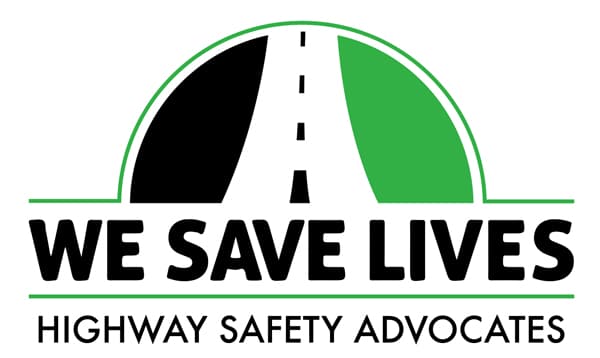
Suddenly, this body came with a lot of terms and conditions that I did not agree to. It’s an unsettling feeling when your body seems to betray you, especially after experiencing something as traumatic as a motor vehicle crash. The multiple injuries I sustained in a crash were not just physical. They affected my emotional and mental state too. It’s frustrating when the body we once trusted to carry you through life now feels like it’s constantly reminding us of its limitations and we suddenly find ourselves wishing that we could have had the chance to age graciously.
The Unexpected Contract
All of the injuries and pain we sustained can feel like an unexpected contract that we never signed. We didn’t ask for this. The body we once relied on to do everyday tasks suddenly requires attention, care, and patience in ways we hadn’t imagined before. The mental toll that comes with these “terms and conditions” can be just as overwhelming. Navigating emotional struggles like anxiety, Post-Traumatic Stress Disorder, and frustration, is as if our body has introduced a new set of challenges we were never prepared for.
There are moments when it feels like the body’s demands are too much. Why now? Why me? There’s anger, confusion, and a sense of helplessness when we are forced to reconsider our limits, to adjust our life and our expectations. We start to notice how much we took for granted. The simple act of walking without pain, sleeping without discomfort, or moving freely without hesitation. Suddenly, everything feels like a series of restrictions, and each day becomes a negotiation with our body: What can I do today? What can’t I do? What hurts, and how much?
I Was Left to Face Multiple Fractures
Fractures are among the most common and painful injuries in crashes. When your body is subjected to extreme force, bones can break in ways that leave you immobilized and in constant pain. Whether it’s broken ribs, a fractured arm or leg, or even fractures to your spine, each break changes your life. Dealing with fractures often means time spent in casts or braces, limited mobility, and reliance on others for daily tasks.
The healing process can take weeks or even months, depending on the location and severity of the fractures. There’s also the fear of complications, such as infections, blood clots, or bone misalignment, which can extend recovery time. Physically, the pain from fractures can feel debilitating, especially when you try to move in ways that strain the healing bone. Mentally, it’s frustrating to feel so reliant on others for help or to watch life go on around you while you’re stuck in recovery mode.
Horrific Seatbelt Injury
Perhaps the most unexpected and agonizing injury I sustained was from the seatbelt itself. While seatbelts are designed to save lives, they can also cause deep bruising and abrasions when subjected to the tremendous force of a crash. The seatbelt wound on my thigh was more than just uncomfortable and painful; it was horrific. For months, I couldn’t wear regular clothing, as even the slightest touch on the wound would send shooting pain through my body. The injury left me feeling vulnerable and raw, both physically and emotionally.
Lacerations, or deep cuts, can be among the most visible injuries you can sustain in a motor vehicle crash. These injuries are often caused by flying debris, shattered glass, or contact with parts of the car’s interior. Depending on the severity, lacerations can leave permanent scars, but they also carry the risk of infection. While the physical pain of lacerations can be intense, the emotional impact of having visible scars can be just as challenging. You might feel self-conscious or distressed, particularly if the lacerations are on your face, hands, or other exposed areas. Healing from lacerations also requires vigilance to prevent infection, which can mean frequent cleaning, dressing changes, and doctor’s appointments. My seatbelt wound required over two months of daily nursing.
Multiple Hematomas
What is a hematoma? A hematoma occurs when blood vessels are damaged and blood collects outside of the vessels, forming a bruise or swelling. In a crash, hematomas can be large and deep, causing pain and swelling in areas like the legs, arms, or torso. Hematomas are sometimes not immediately visible, but as they expand, they can cause considerable discomfort. A couple of weeks into my recovery, hematomas started to appear suddenly and I quicky learnt how the impact caused severe nerve damage.
The sensation of a hematoma, whether it’s from swelling or a visible bruise, can be a constant reminder of the injury. It can restrict your movement, making even simple tasks seem difficult. Hematomas also carry the risk of complications, especially if they are large or if there’s deep internal bruising, which can lead to nerve damage or additional problems as the blood slowly reabsorbs. Beyond the physical pain, dealing with the emotional impact of hematomas particularly if they’re severe and take a long time to heal, can be frustrating. There is often a feeling of “slowness” to the recovery, as bruises and swelling take time to fade, and the lingering reminders of injury can sometimes feel endless.
Head Trauma
Head trauma is one of the most concerning and serious injuries you can sustain in a collision. It can range from a mild concussion to severe brain injury, and the effects can be long-lasting. The symptoms of head trauma vary depending on its severity, but common signs include headaches, dizziness, confusion, memory problems, nausea, and even loss of consciousness. The physical effects of head trauma are often the easiest to recognize, but the psychological impacts can be just as severe. Cognitive difficulties, such as trouble concentrating or experiencing “brain fog,” can be incredibly frustrating. You may struggle with your memory, become more irritable, or feel emotionally unstable as you try to recover from head trauma.
In addition to the cognitive effects, the fear that comes with head injuries can be overwhelming. The uncertainty of how your brain will heal and whether you will fully recover adds a layer of anxiety and stress to the entire healing process. With head trauma, the emotional recovery can sometimes be just as difficult as the physical one, as you navigate changes in your thought patterns, behavior, and overall sense of well-being. It’s extremely important to speak with medical professionals if you are experiencing symptoms.
Lessons Learned: Healing, Patience, and Hope
Surviving a motor vehicle crash is life-changing. It requires patience and resilience. Through the pain, I’ve learned valuable lessons about the importance of self-care, not just physically, but emotionally as well. Here are some things I’ve learned:
- Seek Medical Attention Immediately: Even if you don’t feel seriously injured right after a motor vehicle crash, seek medical treatment. Some injuries, like fractures or internal damage, might not be immediately apparent.
- Healing Takes Time: Physical injuries require time to heal. Do not rush the process, and don’t push yourself too hard. Take your time and be patient with your body.
- Mental Health Matters: A crash is a traumatic experience. Don’t ignore the emotional impact, and seek professional help if you’re struggling with anxiety, depression, or PTSD.
- Support is Essential: Surround yourself with people who care about you. Family, friends and professionals. Their support will be crucial in helping you get through the toughest days.
- Resilience is Possible: Despite the pain, setbacks, and obstacles, I’ve learned that resilience is within us all. You can overcome the most challenging of times if you keep moving forward.
- Take Care of Yourself: Recovery is about the whole person which includes body and mind. Prioritize your health, take it one step at a time, and always remember that healing is possible.
- Be Prepared for the Long Haul: Recovery can take time, especially for more severe injuries. Patience is key, as is a good support system to help you through the ups and downs. Click on this link and join our support group!
The road to recovery after serious multiple injuries is long and difficult. There are days when you feel like you’ll never get back to “normal,” and the pain can feel unbearable. For the first several months, I couldn’t do simple tasks on my own. My daily routine was disrupted, and even the smallest activities seemed like monumental tasks. I spent years in physical therapy working to regain strength and flexibility in my broken body. Every session was challenging, but little by little, I began to notice improvements. I started regaining mobility and strength, though the process was far slower than I anticipated. I also had to adjust to the psychological aspect of recovery, as I worked through my fear of getting back into a car and faced the emotional trauma of the crash.
Healing Takes Time
One thing I learned during this time is that recovery is not linear. Some days, you make great strides, and other days, it feels like you’re taking a step backward. But the key is to keep moving forward, no matter how small the progress may seem. It’s important to be patient with yourself and trust that healing takes time. Today, I am on the path to recovery, and although I still experience chronic pain from the injuries I sustained, I’m doing better each day. The crash was a life-altering event, but it also reminded me of the importance of taking care of myself, both physically and emotionally.
If you’ve been in a motor vehicle crash, don’t hesitate to seek help, whether it’s from medical professionals or mental health counselors. The Crash Support Network is here to support you with compassion and understanding as you continue your healing journey. Don’t hesitate to reach out if you need assistance, have questions, seeking direction or need a bit of encouragement. Recovery takes time, but with the right support and care, you can move forward and reclaim your life.
Let’s all remember that recovery is a journey, and invisible injuries are just as real as visible ones. In the end, the body may have thrown us a curveball, but we are healing, and learning to navigate the terms and conditions we never thought you would face. And that, in itself, is a victory.
S. Dawne McKay is a survivor of a horrific crash that changed her life forever. Dawne shares her personal journey as a Crash Survivor Blogger and also collaborates with crash survivors as Guest Bloggers allowing them an opportunity to share their stories. Dawne is also the author of the book, “Talk Crash to Me – What to Expect After Surviving a Collision and How to Manage Your Recovery” which is available for purchase on Amazon.





